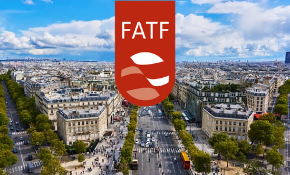Money laundering is the act that enables criminals to camouflage money that originates from a dirty, illegal Source A so that it looks like it came from a clean, legal Source Z. When funds from the illegal activity are integrated into the financial system, it appears that they belong to legitimate sources like trading in drugs, financing terrorism arm and weapons smuggling, prostitution, human and drug trafficking. Criminals do this by hiding their heads or moving the money to a plac e where it is less probable to attract attenti on. This process involves
Stages of money laundering:
- Placement
- Layering
- Integration.
Both local and international organizations make an effort in by using economic and legislative means to prevent suspicious activities for money laundering and supervise related institutions. Almost every country has a national AML compliance system according to its risks and local dynamics. In the international area, there are regional and global authorities. Financial Action Task Force (FATF ) is one of the most efficient actors in this field.
Stage One: Placement
Money laundering placement is placing unlawful proceeds into financial institutions through deposits, wire transfers, or other means. In the placement stage, the money is placed into the financial system through banks, casinos, shops, and other businesses. This phase can involve various types of transactions, such as breaking up large amounts of money into smaller sums and depositing them directly into bank accounts, transporting cash across borders to deposit the funds in financial institutions abroad, or buying precious goods like artwork and antique diamonds, and gold. That can be resold for payment by cheque or bank transfer.
Stage Two: Layering
What is layering? Layering meaning is the process of separating the proceeds of criminal activity from their origin through the use of layers of complex financial transactions. Layering for money laundering is gradually adding legitimacy to the source of illicit money, making it as difficult to detect. Layering is generally considered the most complex component of the money laundering process. It intentionally involves multiple financial intermediaries and transactions to confuse AML checks. Some of the pathways utilized during this step include:
- Changing the money's currency.
- Multiple inter-bank transfers.
- Multiple structured deposits and withdrawals, aka "smurfing."
- Purchasing high-value items such as diamonds, cars, or property.
- Multiple wire transfers between different accounts in different countries.
- Investing in businesses with minimal paperwork, such as currency exchanges, art galleries, and car washes.
- Using money "mules."
It is essential to understand its place in the money laundering process to detect layering. First, the cash is moved to different accounts through a series of financial transactions designed to hide the money's origin in the layering stage. This layering phase can involve legitimate transactions like buying real estate and lawful businesses, placing money in investments such as stocks and bonds, or using a shell company to hide the real owners of the business finally.
Stage Three: Integration
Integration money laundering is the process of using legitimate transactions to disguise illicit proceeds. In the integration stage, the funds are reintroduced into the economy to appear to belong to legitimate sources. This helps the criminal clean the dirty money, invest it, and profit from it. As a result, the integration stage is exceedingly difficult to distinguish between legal and illegal.

After going through multiple laundering pathways, the dirty money finally re-enters the mainstream financial system as a legitimate transaction. This often takes the form of business investment, purchase, or the sale of an asset bought during the layering stage. By this point, the criminal can generally use the "clean" money without getting caught. In general, detection and identification of laundered funds provide through informants. The known methods used are:
- Property dealing.
- Front companies and fraudulent loans.
- Foreign bank complicity.
- False important/export invoices.
Money Laundering in 5 Questions | Step by Step Guide
Why is it a Serious Problem?
Money laundering has potentially devastating economic, security, and social consequences. It fuels drug dealers, terrorists, illegal arms dealers, corrupt public officials, and others to operate and extend their criminal enterprises. Crime has become increasingly international in scope. The financial aspects of crime have become more complicated due to rapid technological advances and globalization's financial services industry.
Money laundering is a problem in major financial markets, seaside countries, and emerging markets. As emerging markets open up their economies and financial sectors, they become increasingly appropriate targets for money laundering activities. Money laundering creates unpredictable shifts in money demand and causes large fluctuations in global capital flows and exchange rates.
If you want to learn more about the adverse effects, you can read our " Negative Effects of Money Laundering " article.
What Should Businesses Do To Prevent Money Laundering?
Tax evasion should be prevented in all steps, from production to consumption, and large amount of cash movements should be monitored.
- The media should fully support the fight against organized crime and should not broadcast to legendary mafia members.
- In the private sector, cartels should be prevented, and the underground economy should be reduced by eliminating tax-free earnings as much as possible.
- Businesses can protect themselves from financial crimes and strengthen AML compliance processes using AML software such as Sanction Scanner.
Sanction Scanner has more than 3000 sanction lists. These lists consist of other global and local sanctions and moral lists, including data provided by the US, UK, UN, and other international significant and minor government regulators. Sanction Scanner always keeps its lists up to date. In addition, sanction and pep lists are checked and processed every fifteen minutes. In short, Sanction Scanner compliance software simplifies complex compliance processes for companies.
If you need more information about Sanction Scanner solutions, you can
contact us
or
request a demo.





